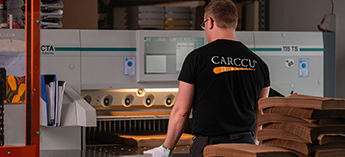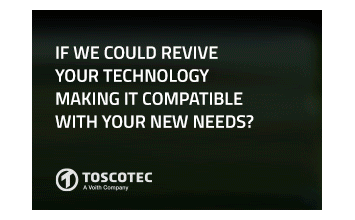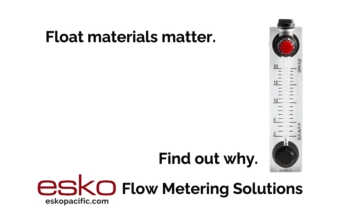In The Spotlight
Canfor Corporation announced on May 1st that it will acquire the El Dorado lumber facility in Arkansas from Resolute El Dorado Inc., an affiliate of Domtar Corporation.
Twin Rivers Paper Company, a leader in specialty paper products, announced the sale of its Pine Bluff, Arkansas unbleached kraft paper mill to American Kraft Paper Industries, an affiliate of global industrial group American Industrial Acquisition Corporation (AIAC).
According to the Global Carbon Budget project, there were 40 billion tonnes of anthropogenic CO2 emissions worldwide in 2023.
Statistics Canada released the results of its biennial Waste Management Survey1, containing waste diversion data for 2022.
The Company agreed a protocol for infrastructure works with the State of Rio Grande do Sul and began the process of environmental requests for specific studies for a pulp mill of up to 2.5 million tons of pulp in the municipality of Barra do Ribeiro.
Graphic Packaging Holding Company (NYSE: GPK), (the "Company"), a leader in sustainable consumer packaging, today reported first quarter 2024 results.
SPOKANE, Wash. - Clearwater Paper Corporation (NYSE:CLW), a premier supplier of quality consumer tissue and bleached paperboard today reported financial results for the first quarter ended March 31, 2024.
RYAM (Rayonier Advanced Materials) announced today the indefinite suspension of activities at its high-purity cellulose (HPC) plant in Témiscaming, effective July 2, 2024.
Mondi, a leading paper and packaging producer, tackles a common question: why not use 100% recycled paper? Their answer highlights the crucial partnership between fresh and recycled fibers in maintaining a healthy paper cycle.
Feature Articles
Top Stories
VANCOUVER, BC, May 1, 2024 - Canfor Pulp Products Inc. ("The Company" or "CPPI") (TSX: CFX) today reported its first quarter of 2024 results:
VANCOUVER, BC, May 1, 2024 - Canfor Corporation ("The Company" or "Canfor") (TSX: CFP) today reported its first quarter of 2024 results:
Canfor Corporation announced on May 1st that it will acquire the El Dorado lumber facility in Arkansas from Resolute El Dorado Inc., an affiliate of Domtar Corporation.
Interfor Corporation announced plans on April 30 to reduce lumber production by approximately 175 million board feet between May and September 2024.
Twin Rivers Paper Company, a leader in specialty paper products, announced the sale of its Pine Bluff, Arkansas unbleached kraft paper mill to American Kraft Paper Industries, an affiliate of global industrial group American Industrial Acquisition Corporation (AIAC).
The Company agreed a protocol for infrastructure works with the State of Rio Grande do Sul and began the process of environmental requests for specific studies for a pulp mill of up to 2.5 million tons of pulp in the municipality of Barra do Ribeiro.
According to the Global Carbon Budget project, there were 40 billion tonnes of anthropogenic CO2 emissions worldwide in 2023.
Statistics Canada released the results of its biennial Waste Management Survey1, containing waste diversion data for 2022.
April 16, 2024 - Earlier today, Forest Products Association of Canada (FPAC) President and CEO Derek Nighbor released the following statement in response to the 2024 Federal Budget tabled by Deputy Prime Minister and Minister of Finance, the Honourable Chrystia Freeland.
Cellulose packaging is booming. In recent years, we've seen the arrival - on the Quebec market - of cellulose packaging from other regions of the world.
With the ongoing momentum in corporate sustainability initiatives, the collaboration between pulp and paper companies and major corporations to create sustainable alternatives for their product lines is on the rise.
Sustainable forest management is essential to the Canadian paper packaging industry and its circular economy.
Are any of these new to you? Some flow meter features can catch users by surprise. How many of these flow meter facts do you know already?
Colombian tissue manufacturer C.Y.P. Del R. S.A. has started up a complete AHEAD 1.8 tissue line supplied by Toscotec at its mill in Risaralda.
Recycling is a central component of Voith Paper’s sustainability strategy and forms the basis for a sustainable paper industry.
In an era where environmental consciousness is not just a trend but a necessity, businesses across the globe are taking significant strides towards sustainability
Benefit from the expertise of the Groupe PMI, a leader in turnkey solutions for your industrial projects and the maintenance of your process equipment.
More vacuum alone may not be the answer
Tim Kirchen has been appointed Executive Vice President, UPM Raflatac.
Recognising the importance of recyclability for the circular economy, Sappi has established a recyclability testing laboratory within its R&D Department.
British Columbia's once plentiful forests are facing a new threat: the booming biomass industry in Japan.
Specialty Papers returns to Europe across the 3-4 September as part of Smithers Paper Week 2024, in Vienna.





































































